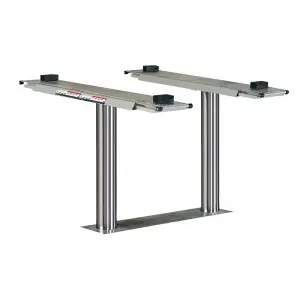The cylinder is a timeless geometric shape that has fascinated mathematicians, engineers, and artists throughout history. With its perfectly round and curved surface, this three-dimensional figure has a multitude of applications and has played a significant role in shaping our world. From ancient times to the modern era, the cylinder has left an indelible mark on various fields, including architecture, engineering, and design.
The origin of the cylinder dates back to ancient Mesopotamia, where it was used in the construction of massive ziggurats. These towering structures, comprised of stacked cylinders, served as religious temples and were a testament to the advanced architectural and engineering skills of the time. The cylindrical shape provided stability and strength, allowing these ancient structures to withstand the test of time.

Unlocking the Secrets of the Cylinder: Understanding Its History and Versatility
In ancient Greece, the cylinder gained further recognition as a mathematical concept. Mathematician and engineer Archimedes extensively studied the properties of cylinders and made important contributions to their understanding. He discovered that the volume of a cylinder is equal to the product of its base area and height, a fundamental principle still taught in schools today. Archimedes’ work on cylinders laid the foundation for further advancements in geometry and mathematics.
During the Renaissance period, the cylinder became a prominent feature in art and design. Artists such as Leonardo da Vinci explored its aesthetic qualities and incorporated cylindrical shapes into their artworks. Da Vinci’s famous Vitruvian Man, for instance, features a cylindrical shape within the outline of the human figure, representing harmony and proportion. This exemplifies how the cylinder transcends its mathematical and engineering origins and integrates into various aspects of human expression.
The industrial revolution marked a turning point for the cylinder, as it became an integral component of machinery and engines. The invention of the steam engine by James Watt revolutionized transportation and manufacturing processes. Steam engines utilized cylindrical boilers and pistons to convert heat energy into mechanical work, enabling the modern world as we know it. The efficiency and power of the cylinder in these machines played a pivotal role in the rapid advancement of technology during this era.

Unlocking the Secrets of the Cylinder: Understanding Its History and Versatility

Unlocking the Secrets of the Cylinder: Understanding Its History and Versatility
Today, the cylinder continues to be a fundamental shape in many fields. In architecture, cylindrical buildings, such as the Guggenheim Museum in New York City, showcase not only aesthetic appeal but also structural innovation. The use of cylinders in architecture allows for efficient space utilization and creates unique interior environments. Additionally, the application of cylinders in infrastructure, such as bridges and tunnels, provides stability and strength to these essential structures.
Engineers utilize cylinders in a wide range of industries, including automotive, aerospace, and construction. Cylindrical components in engines, such as cylinders, pistons, and cylinders’ heads, are critical for converting energy and generating power. The cylindrical shape ensures smooth movement and efficient combustion, enhancing performance and fuel economy. In construction machinery, hydraulic cylinders play a vital role in lifting heavy loads and controlling movement, allowing for precise operations.
The versatility of the cylinder extends into the realm of design and everyday objects. From beverage cans to storage containers, cylindrical shapes are commonplace in our lives. The simplicity and efficiency of the cylinder make it ideal for packaging and storing various products. Additionally, in the field of furniture design, cylindrical forms are often incorporated to create visually appealing and functional pieces.
In conclusion, the cylinder is an iconic shape that has played a significant role in human civilization. From its origins in ancient architecture to its modern-day applications in various industries, the cylinder has stood the test of time. As we continue to explore and innovate, we must appreciate the versatility and inherent beauty of this fundamental geometric figure. Whether in art, engineering, or everyday objects, the cylinder continues to be a symbol of ingenuity and human achievement.quick lift car lift
